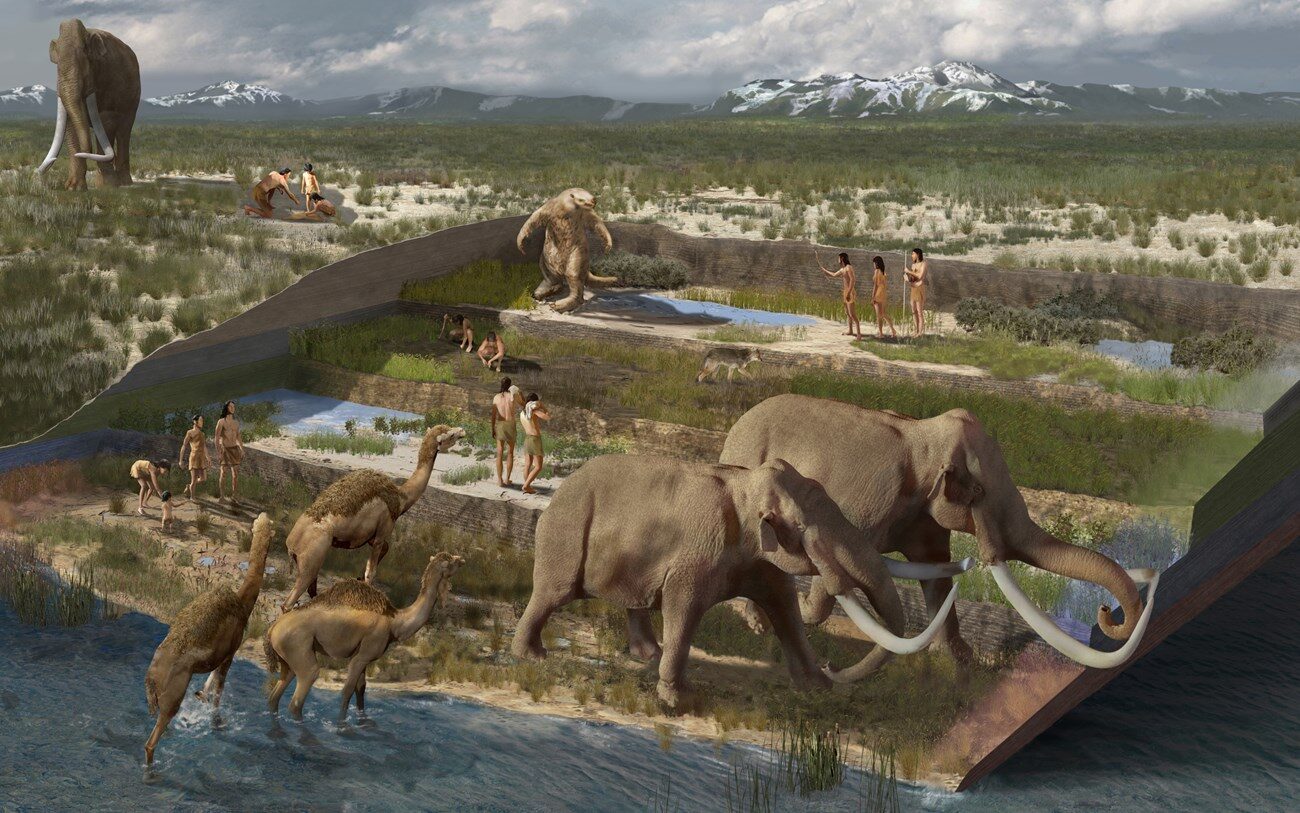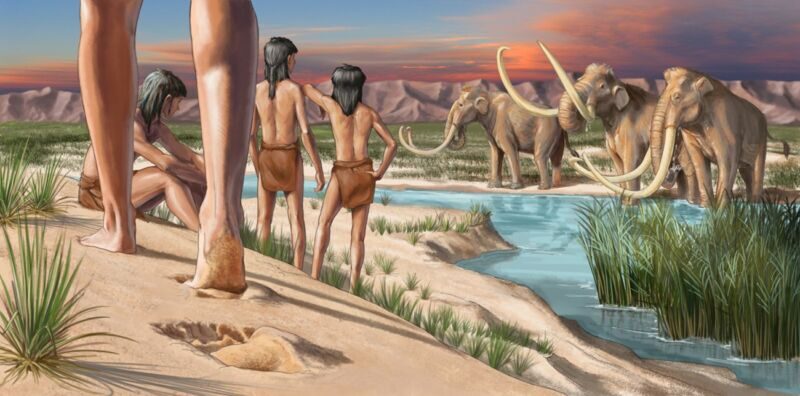People really were walking around in the southwestern US during the middle of the last Ice Age, according to a recent study that double-checked the dates on a set of surprisingly ancient human footprints at White Sands National Park.
Many thousands of years ago, someone walked along the muddy shore of an ancient lake at what's now White Sands. They crushed ditchgrass seeds and grains of conifer pollen beneath their feet with every squishing, slippery step. Bournemouth University archaeologist Matthew Bennett and his colleagues (including the authors of the current study) unearthed eight layers of tracks at the site in early 2020; they radiocarbon-dated the ditchgrass seeds from the oldest layer of footprints to 23,000 years old and the youngest layer to around 21,000 years old.
Their 2021 paper sparked immediate debate.
People weren't supposed to be there yet
USGS research geologist Jeff Pigati and his colleagues (including Bennett and other co-authors of the 2021 paper) recently radiocarbon-dated conifer pollen — mostly from fir, spruce, and pine — from the same ancient ground surface as the tracks and the ditchgrass seeds. They also used another type of dating, called optically stimulated luminescence (a type of dating that measures when a grain of quartz was last exposed to sunlight) on sediment samples from between the oldest two layers of tracks. The results lined up very well with Bennett and his colleagues' original radiocarbon dates; the tracks couldn't be any younger than about 21,500 years old.
A growing pile of evidence suggests that the first people to set foot in the Americas spread south along the Pacific coast sometime between 20,000 and 16,000 years ago, following the slowly receding western edge of the ice sheet. If Pigati and his colleagues are right, people walked at White Sands between 23,000 and 21,000 years ago. That's a big enough claim on its own, but it carries even bigger implications.
"This obviously shows that people were in what is now Southern New Mexico 23,000 years ago, well south of the coalesced Laurentide and Cordilleran ice sheets," USGS research geologist Kathleen Springer, a coauthor of both studies, told Ars Technica. "So that means they had to have been there before those big walls of ice closed, or they got there some other way."
The ice sheets sealed off the northern third of the continent around 26,000 years ago.

To support a claim that extraordinary, Bennett and his colleagues (including Pigati, who led the most recent study and was also involved in dating the ditchgrass seeds) needed to present solid, undeniable evidence to their fellow archaeologists. And when they published their first paper in 2021, they knew they didn't quite have it — what they had instead was ditchgrass.
Ditchgrass, as its name suggests, is an aquatic plant, exactly the kind of thing you'd expect to find along the shore of a lake. But aquatic plants tend to soak up groundwater, which can contain older carbon than the rain that waters more landlubberly plants. Seeds from aquatic plants like ditchgrass can (but don't always) look older than they really are when radiocarbon-dated — sort of like the radiocarbon version of carrying a fake ID.
Land-dwelling plants, like the conifer trees whose pollen Pigati and his colleagues dated in their more recent study, don't have that problem. And optically stimulated luminescence is based on how much of certain types of radiation a mineral has absorbed since it was last exposed to sunlight, so if those different lines of evidence point in the same direction, it makes a very strong argument.
But it's not news to everyone.
"The indigenous folks that are out there tell us they already knew this," said Springer. "They have their oral history that they were always there. 'We're just putting numbers on your story,' I tell them."

It's possible that people simply walked into North America (it's not Mordor, after all) sometime before 26,000 years ago, and a group of their descendants eventually ended up squelching through the mud in a cooler, wetter version of what's now New Mexico. That scenario could also explain the stone tools unearthed from a 30,000-year-old layer of sediment in Chiquihuite Cave, Mexico. And it doesn't rule out another wave of people venturing onto the continent later once the ice started to recede.
Then again, a February 2023 paper suggests that the coastal migration route may have opened and closed several times during the long years of the Last Glacial Maximum. Based on paleoclimate records and computer simulations, the US Geological Survey's Summer Praetorius and her colleagues suggest that people could have worked their way south along the Pacific coast between 24,500 and 22,000 years ago, which means their descendants could have reached White Sands a millennium or two later.
"There's all these hypotheses of migratory pathways and stuff, but our study can't address any of that — all it really does is establish that people were there at that time," said Springer. "That's pretty powerful in itself." It's also still a very large jump in the timing of people's first arrival in the Americas, especially when the Chiquihuite Cave evidence — as well as the 18,000-year-old tools at Cooper's Ferry in Idaho — are still being debated. But there's enough evidence to take the White Sands, Chiquihuite, and Cooper's Ferry claims seriously.
One question archaeologists will definitely be wrestling with in the coming years is why, if people have been in the Americas since 30,000 or even 23,000 years ago, there aren't more sites with similar ages scattered across the continent. And one possible answer is that many of them are underwater, swamped by sea levels that rose as the gargantuan ice sheets melted.
Another possibility is that they just haven't been found yet. Mobile groups of hunter-gatherers leave light traces, if any. Pigati and his colleagues are now working on the west side of the Tularosa Basin at White Sands, on the opposite side of the ancient lakebed from the tracks in their recent study, and they're also reconstructing the ancient environment that might have drawn people and animals to the tracksite on the eastern side of the basin.
Meanwhile, Pigati and Springer told Ars, there are hundreds of similar dry lakebeds all over the Western US that haven't been studied. "In terms of finding a new archive of archaeological data that's really almost untapped, we're going to see really some neat stories come out in the coming years," said Pigati.
Kiona N. Smith is a freelance science journalist and resident archaeology nerd at Ars Technica.




Where are their iPhones?